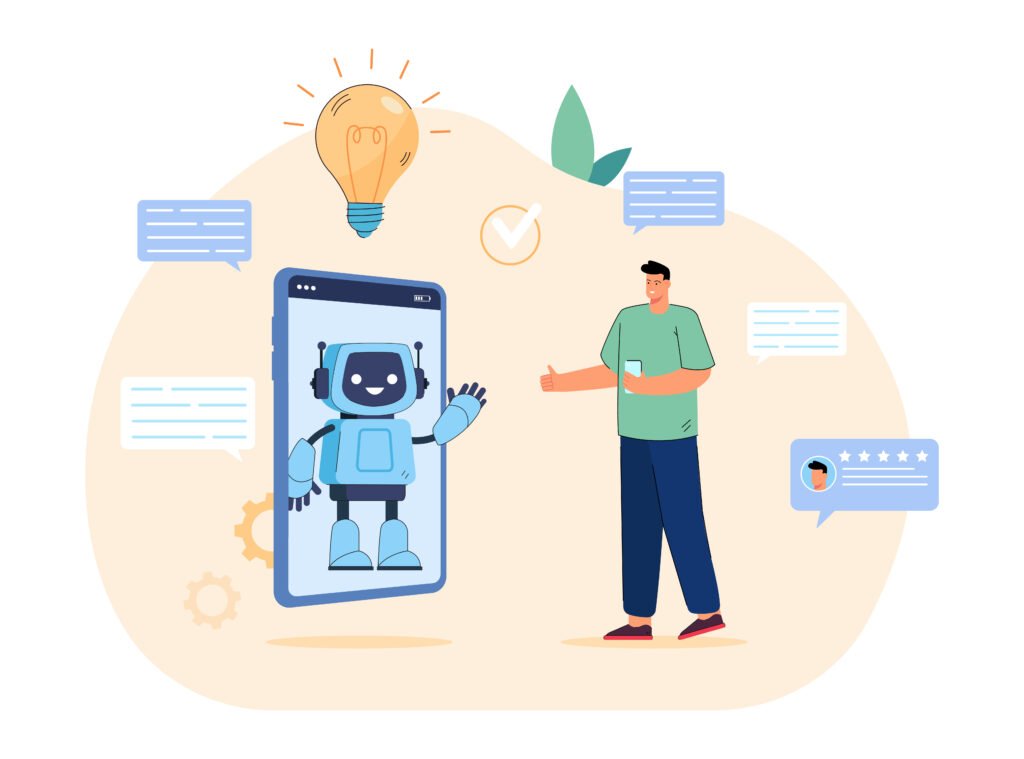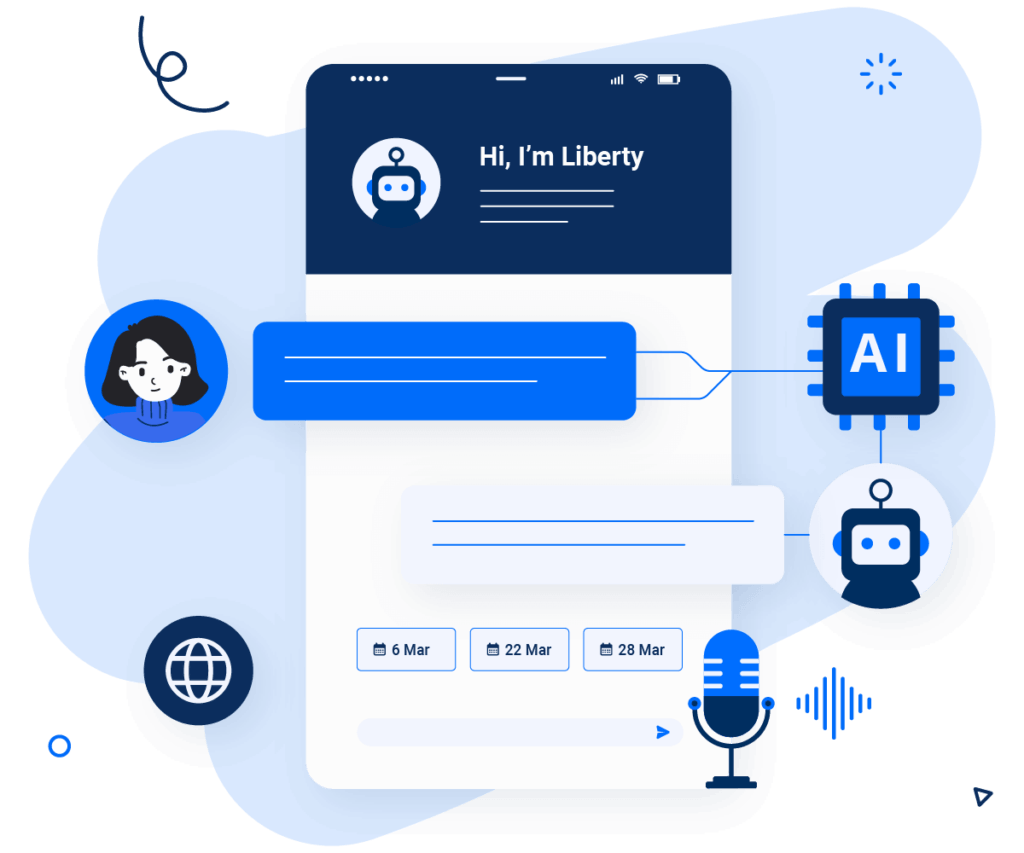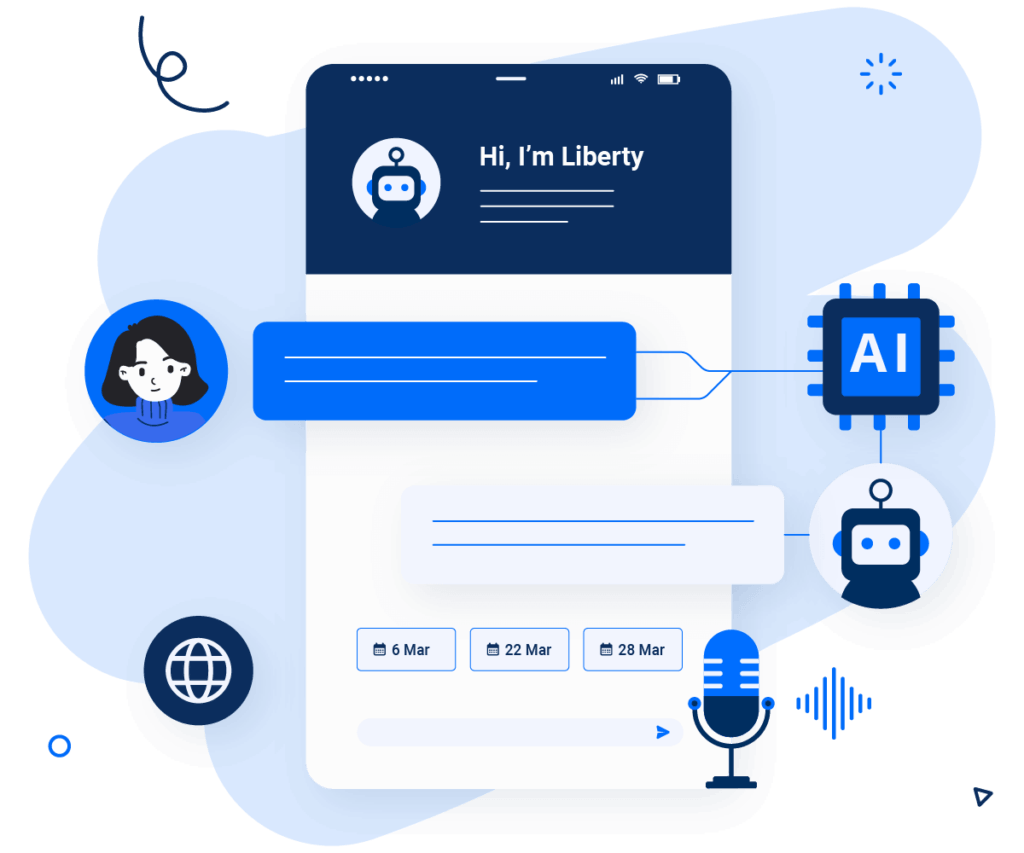Imagine having a conversation with a chatbot that seems to understand you perfectly, anticipating your needs and providing personalized recommendations. This is made possible by the power of artificial intelligence (AI), which plays a crucial role in personalizing chatbot interactions. AI enables chatbots to analyze vast amounts of data, learn from user behavior, and adapt their responses accordingly. In this article, we will explore the various ways in which AI enhances the personalization of chatbot interactions, making them more engaging and tailored to each individual user.

Understanding Chatbots and Personalization
Chatbots are computer programs designed to simulate human conversation and interact with users through messaging platforms or websites. These intelligent virtual assistants use artificial intelligence (AI) algorithms to understand and respond to user queries, providing a convenient and efficient way to deliver services, information, and support. Personalization in chatbot interactions refers to tailoring the conversation and responses to each individual user’s preferences, needs, and context. It involves using AI techniques to analyze user data, learn from interactions, and adapt the chatbot’s behavior to provide a more customized and engaging experience.
Applications of AI in Personalizing Chatbot Interactions
Natural Language Processing
Natural Language Processing (NLP) is a branch of AI that focuses on enabling computers to understand human language. It plays a crucial role in chatbots by allowing them to interpret and analyze user inputs. NLP techniques, such as entity recognition, sentiment analysis, and intent classification, enable chatbots to extract meaningful information from user messages, understand their emotions, and identify the purpose of their queries. By leveraging NLP, chatbots can provide more accurate and relevant responses tailored to the user’s specific needs.
Machine Learning
Machine Learning (ML) is a subset of AI that enables chatbots to learn from data and improve their performance over time. By training on large datasets, chatbots can automatically discover patterns, make predictions, and adapt their behavior based on user interactions. ML algorithms can help chatbots personalize their responses by analyzing the user’s historical data, understanding their preferences, and predicting their intents. This allows chatbots to provide more accurate and contextually relevant information, enhancing the overall user experience.
Deep Learning
Deep Learning is a subfield of ML that focuses on training artificial neural networks to mimic the human brain’s structure and function. It has revolutionized many AI applications, including chatbots. Deep Learning enables chatbots to understand and generate more natural and human-like conversations by leveraging techniques such as Recurrent Neural Networks (RNNs) and Transformers. These models can capture the context, semantics, and sentiment of the user’s inputs, enabling chatbots to provide more personalized and emotionally intelligent responses.
Improving User Experience through AI
Real-time data analysis
AI-driven chatbots can analyze user data in real-time to continuously understand and adapt to the user’s preferences and needs. By monitoring and analyzing user interactions, AI algorithms can identify patterns, preferences, and trends that can help personalize the chatbot’s responses. For example, if a user frequently asks about a specific topic, the chatbot can proactively provide related information or suggestions, enhancing the user experience and saving time.
Contextual understanding
AI-enabled chatbots can understand the context in which a user’s query is made, allowing them to provide more relevant and personalized responses. By considering the user’s previous interactions, location, time, and other contextual factors, chatbots can tailor their answers and recommendations accordingly. For instance, a chatbot assisting with travel booking can offer personalized recommendations based on the user’s historical travel preferences and current location.
Personalized recommendations
AI-powered chatbots can leverage user data and ML algorithms to provide personalized recommendations to users. By understanding the user’s preferences, browsing history, and past interactions, chatbots can suggest relevant products, services, or content that align with the user’s interests. This not only enhances the user experience but also increases the chances of conversions and customer satisfaction.
Enhancing Chatbot’s Responses and Language
Natural Language Generation
Natural Language Generation (NLG) is a technology that allows chatbots to generate human-like responses. By combining AI techniques such as deep learning and NLP, chatbots can produce coherent and contextually relevant sentences that mimic human speech. NLG enables chatbots to engage in more natural and personalized conversations, improving the overall user experience and making the interaction feel more human-like.
Sentiment analysis
Sentiment analysis is an AI technique that helps chatbots understand and interpret the emotions and attitudes expressed in user messages. By analyzing the sentiment behind the user’s input, chatbots can respond appropriately and empathetically. For example, if a user expresses frustration or dissatisfaction, the chatbot can offer solutions or escalate the issue to a human agent. Sentiment analysis enhances personalization by enabling chatbots to adapt their tone and responses to match the user’s emotional state.
Language translation
AI-powered chatbots can leverage language translation capabilities to communicate with users in their preferred language. By using machine translation algorithms, chatbots can provide multilingual support, enabling users from different regions to interact with them comfortably. Language translation enhances personalization by overcoming language barriers and delivering a tailored experience to users worldwide.

Training and Learning
Supervised learning
Supervised learning is a machine learning technique that involves training a chatbot on labeled datasets. In supervised learning, chatbots learn from examples where the correct response is known, allowing them to generalize and make predictions on unseen user inputs. By continuously training the chatbot with high-quality labeled data, it can improve its accuracy, personalized responses, and understanding of user intents.
Reinforcement learning
Reinforcement learning is an AI approach that allows chatbots to learn from trial and error. In reinforcement learning, the chatbot interacts with its environment and receives rewards or penalties based on its actions. Through this process, the chatbot can learn how to optimize its behavior to maximize rewards and provide personalized responses that align with the user’s preferences.
Self-learning chatbots
Self-learning chatbots leverage AI algorithms to continuously learn and improve without human intervention. These chatbots use techniques such as unsupervised learning and deep learning to analyze user interactions, identify patterns, and adapt their behavior accordingly. By continuously learning from real-time data, self-learning chatbots can provide increasingly personalized and accurate responses, enhancing the user experience without the need for manual updates or interventions.
Chatbot Security and Data Privacy
Protecting user information
AI-driven chatbots must prioritize the security and privacy of user information. To ensure the confidentiality and integrity of user data, chatbots can implement encryption techniques when transmitting and storing information. Additionally, proper access controls and authentication mechanisms can be implemented to prevent unauthorized access to user data.
Secure data storage
AI-powered chatbots should responsibly store and handle user data. By using secure and robust storage systems, chatbots can protect user data from unauthorized access or data breaches. Implementing measures such as data anonymization, data minimization, and regular security audits can further enhance the security and privacy of user information.

The Future of AI-Driven Personalized Chatbot Interactions
Advancements in AI technology
The future of AI-driven personalized chatbot interactions holds great promise. As AI technology continues to advance, chatbots will become more intelligent, contextually aware, and capable of engaging in natural conversations. With advancements in areas such as deep learning, reinforcement learning, and natural language understanding, chatbots will provide more accurate, relevant, and personalized responses, further enhancing the user experience.
Improving natural language understanding
AI-powered chatbots will continue to improve their ability to understand and interpret human language. Through advancements in NLP and deep learning, chatbots will become better at capturing nuances, context, and emotions in user inputs. This will enable chatbots to provide more empathetic and personalized responses, making the interaction feel more natural and human-like.
Integration of voice assistants
As voice recognition and natural language understanding technologies advance, chatbots will increasingly integrate with voice assistants such as Siri, Alexa, and Google Assistant. This integration will allow users to interact with chatbots using voice commands, making the experience more convenient and accessible. The combination of personalized chatbot interactions and voice assistants will revolutionize the way users seek information, receive support, and engage with virtual assistants.
In conclusion, AI plays a vital role in personalizing chatbot interactions. Through NLP, ML, and deep learning techniques, chatbots can provide more accurate and relevant responses tailored to each user’s preferences and needs. With real-time data analysis, contextual understanding, and personalized recommendations, chatbots can enhance the user experience and deliver a more personalized and engaging interaction. By leveraging NLG, sentiment analysis, and language translation, chatbots can improve their responses and language, making the interaction feel more natural and human-like. With supervised learning, reinforcement learning, and self-learning capabilities, chatbots can continuously improve their performance and adapt to users’ changing requirements. Ensuring chatbot security and data privacy is crucial in maintaining user trust. Looking ahead, advancements in AI technology, natural language understanding, and integration with voice assistants will shape the future of AI-driven personalized chatbot interactions, revolutionizing the way we interact with virtual assistants.
